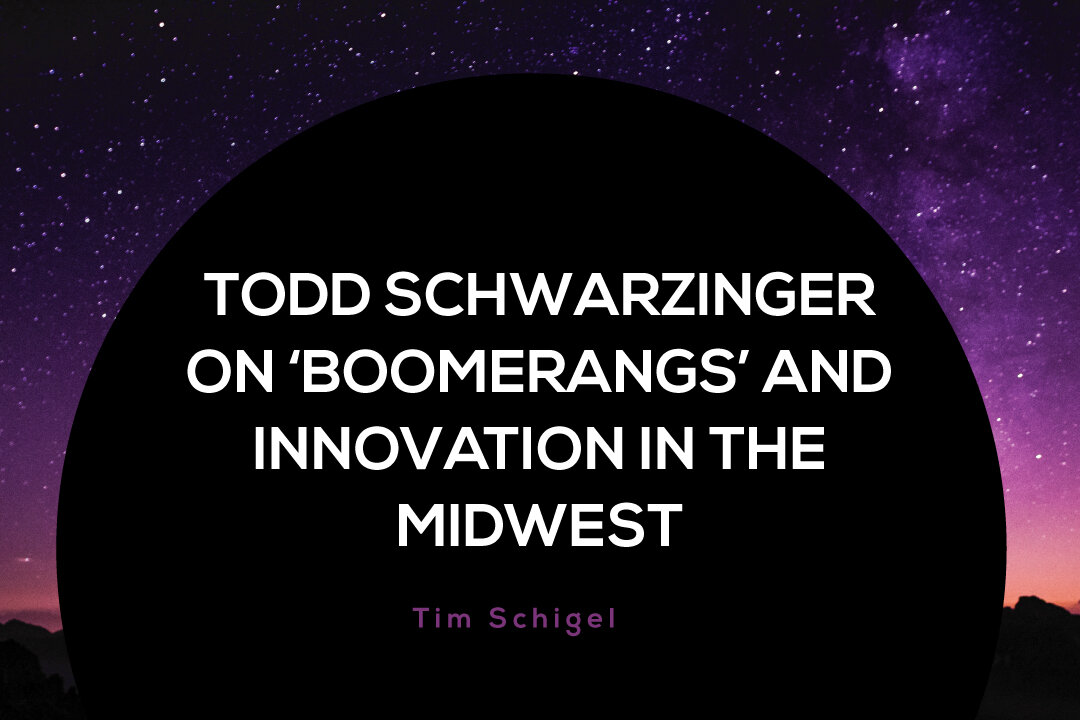Last fall, we wrote about how 2020 has set off many unexpected shifts in the business world, including the “boomerang” effect. Over the past few months, an increasing number of people from dense and expensive urban cities, including VC hubs like the San Francisco Bay Area and New York City, have moved to less crowded—and far more affordable—suburban and rural ones. Studies show that the states that lost the most residents during the pandemic were New York, Illinois, and California.
With people working remotely, companies and cities had to learn to adapt so that they could still bring a high-growth, innovative mindset to the table that thrives as the world goes forward in this new era of office culture. Many cities have been challenged to attract established corporations, expertise, and innovators.
Attracting top-notch corporations, entrepreneurs, and innovators to the Midwest has always been difficult; local talents have always moved out to meccas like San Francisco and New York for better opportunities. However, the pandemic has brought on a golden opportunity for businesses to bring that talent back home, causing this “boomerang” effect.
Bringing Innovation and Talent to the Midwest
Todd Schwarzinger, one of our venture partners, has an exciting boomerang story that has taken him overseas, to the west coast, and back to the Midwest. He spoke to us about how the talent gap once felt in the Midwest is starting to change and how there is a fantastic quality of life there for those looking to bring their innovation and talent to the Midwest.
Todd grew up in Cleveland, then went on to business school at Duke University in North Carolina. After that, he worked in London and New York as an investment banker with Morgan Stanley. Then he moved to the West coast and ran the healthcare practice for a group called Silicon Valley Bank, a lender to early-stage companies. His wife’s job then took them back to his hometown of Cleveland, where they are now.
Since then, he has been focused on working with us as a venture partner in the healthcare sector. One of his key focuses is on trying to identify people like himself from the West coast who are interested in moving back to the Midwest like he did.
Todd agrees that the fact that many companies are allowing their employees to work from home brings new opportunities for companies in the Midwest. “You’re seeing it across all industries. I mean, people got used to working remotely and found out you could be pretty productive. I think solving for the talent gap has always been kind of an issue with companies in the Midwest. There just isn’t as deep of a pool of highly talented people here. So, the opportunity to supplement teams with people from outside the region with this new distributed workforce is really interesting for everybody involved.”
Todd explained that there’s still a deeper pool of talent in cities like New York and on the West coast, but Cleveland has a better cost of living and quality of life and is attracting more people. He’s right—according to this article, a body of informed opinion believes Northeast Ohio’s economy not only has an opportunity to survive the pandemic but to also grow from it. “We have reasonably priced housing, world-class culture and entertainment centers, and some of the world’s greatest doctors and hospitals no more than an hour from the end of every Northeast Ohioan’s driveway,” says Brett Larkin, regarding cities like Cleveland and Akron.
Todd believes there are lots of benefits to “boomeranging.” Personally, it has helped him gain perspective from the outside region. “Having been part of and surrounded by really high-rise companies on the West Coast and in New York, it gives you a (different) perspective that you can bring to companies here, which I think is great,” he said.
Not surprisingly, Todd prefers working with early-stage companies. “I think most of the innovation is done by innovative young companies, and I just found working with them more interesting than the large companies,” he explained. “You can really make an impact with the teams that you’re working with as an investor and as an advisor. So, I just like the early-stage days better.
“We’ve been able to provide really important capital to companies that are just beginning to scale and support them in that really important stage of growth. So that’s pretty fun. And at the university, I’ve been able to bring some of my experience, my exposure, my connections to bear to help researchers think through the best way to take their technologies to market. It’s just harder with larger companies; you have far less of an impact,” he said.
Bright Futures for Startups in the Midwest
Todd said that he sees a bright future for startups in the Midwest and believes people have an excellent opportunity to make an impact in regions like Cleveland. In cities like San Francisco, you are a small fish in a big pond and become very average. But those who move back to the Midwest have a chance of being a big fish and making a big impact.
“There are really highly talented people (in California), and a real big war for talent too,” he said. “There are a ton of early-stage companies and a finite amount of talent to hire to make those companies successful. And it’s really competitive. So, you can hire really talented people here for cheaper, which is always surprising to people. There’s also a really talented workforce here.”
Todd believes that in the next ten years, a lot of innovation will spring from the Midwest. “It really depends on a lot of factors, but I feel pretty optimistic about it. I mean, there are a lot of really great ideas, a lot of innovation, and there’s a lot of work being done in Cleveland as an example, to try and support the entrepreneurial ecosystem, and bring capital to bear for early-stage companies. I think there’s a big opportunity here.”


